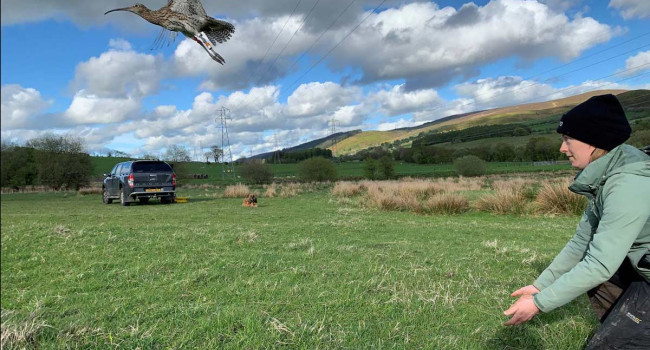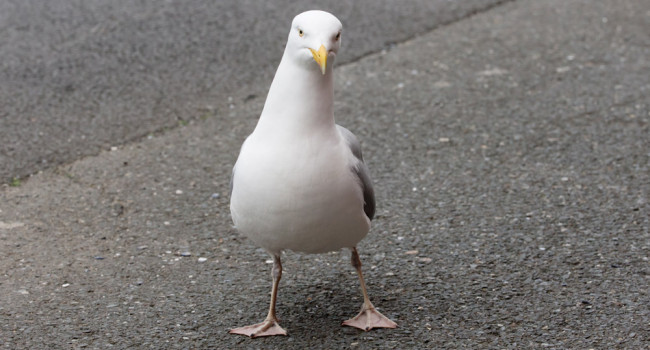New resource for people wanting to improve their bird brains
01 May 2012 | No. 2012-14
The latest BirdTrends report from the British Trust for Ornithology (BTO), just published on-line, shows just how well – or not - our birds are doing.
migrants
April witnessed the return of the summer migrants to UK shores. Chiffchaff and Blackcap were first to arrive, their strident songs currently competing with those of resident thrushes, tits and finches as they try to attract a passing mate. Both species seem to have reappeared in good number, but how do we tell? Are their fortunes improving, or is this just an unusually good year?
Anyone with an interest in ornithology, from the amateur birdwatcher to the professional conservationist, will be delighted to hear that the answers to such questions are now available on-line via the BTO/Joint Nature Conservation Committee (JNCC) BirdTrends report. Bringing together the results of the volunteer surveys run by the BTO, the report highlights those species that have increased and decreased in number over the past 45 years and reviews the latest research into probable causes.
“The losers according to this year’s report are Mistle Thrush and Tawny Owl, numbers of which have fallen by 50% and 25% respectively since the mid-1960s” notes John Marchant, Projects Co-ordinator at BTO and one of the report’s lead authors. “It’s not all doom and gloom, though – the latest results suggest that numbers of several species, including Dunnock and Song Thrush, which had been declining steadily have started to pick up again over the last decade. Chiffchaff and Blackcap populations are also booming; numbers of the former have tripled while those of the latter have doubled in the last 25 years.”
“BTO volunteers collect an amazing amount of information about Britain’s birds each year and it can seem a bit overwhelming” explains Dave Leech, Senior Research Ecologist at BTO. “The BirdTrends report picks out the key results of our different surveys for each species in turn, highlighting changes in their numbers, breeding success and survival over the last five decades – if you want to know how well your favourite species is doing, this really is the first place you should look.“
The BTO’s Director, Andy Clements, is keen for the results of scientific surveys to be more accessible to members of the general public. “BirdTrends is a really useful resource for conservation, and is rapidly becoming the accessible and interesting place for society to discover new knowledge about our birds. As interest in facts and science grows, come and visit the rich information resource that is BirdTrends!"
JNCC’s Senior Monitoring Ecologist Deborah Procter, “The BirdTrends pages paint a graphic picture of changes in bird numbers over time and provide a succinct summary of research done to understand why the changes are happening. It is important to understand what drives changes so that conservation action can be effectively targeted. What BirdTrends also shows is the consistent high quality recording effort put in by volunteer naturalists – without which our understanding of bird ecology would be significantly poorer.”
Notes for Editors
- The BirdTrends report is a one-stop shop for information about the population status of the common birds of the wider UK countryside. It is based on data gathered by the many thousands of volunteers who contribute to BTO-led surveys. With one web page per species, users can quickly find all the key information about trends in population size and breeding performance over the period 1966–2010, as measured by BTO monitoring schemes.
- The BTO is the UK’s leading bird research organisation. Over thirty thousand birdwatchers contribute to the BTO’s surveys. They collect information that forms the basis of conservation action in the UK. The BTO maintains a staff of 100 at its offices in Norfolk, Stirling and Bangor, who analyse and publicise the results of project work. The BTO’s investigations are funded by government, industry and conservation organisations.
Contact Details
Dave Leech
(Senior Research Ecologist)
Office: 01842 750050
(9am-5.30pm)
Email: dave.leech [at] bto.org
Paul Stancliffe
(BTO Press Officer)
Office: 01842 750050
(9am-5.30pm)
Mobile: 07585 440910 (anytime)
Email: press [at] bto.org
Contact details for the JNCC press office are:
Email: communications [at] jncc.gov.uk
Tel: Wendy Dalton 01733 866884 or Maddy Smith 01733 866886
Images are available for use alongside this News Release.
Please contact images [at] bto.org quoting reference 2012-14
The BTO has an ISDN line available for radio interviews. Please contact us to book an interview. Office: 01842 750050






Share this page